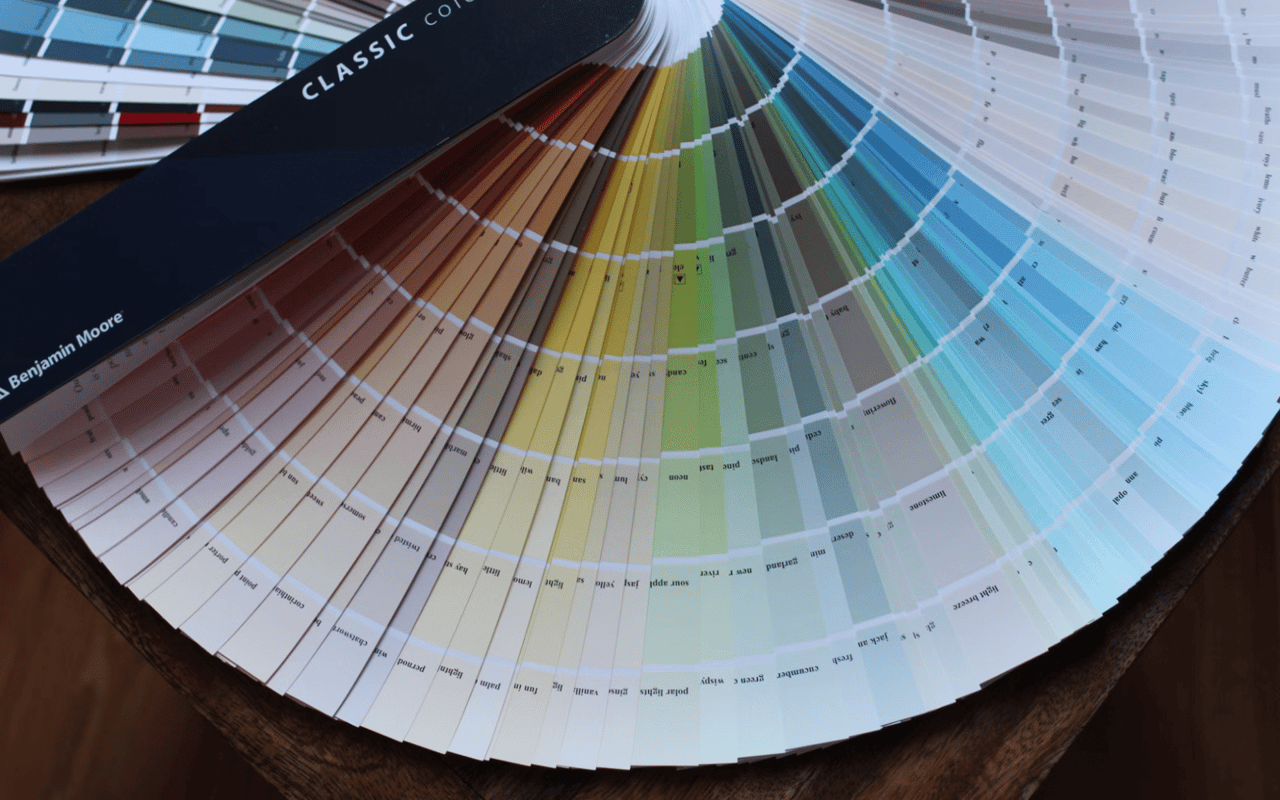Color is one of the most powerful tools in interior design. It can set the mood, enhance a room's size, and even influence emotions. Choosing the right paint tones for your home is a science as much as it is an art. Understanding how to choose colors for a room can transform any space into a harmonious and aesthetically pleasing environment. Whether you're staging homes for sale in Coronado, CA, or simply refreshing your living space, the right color choices are essential.
Understanding Color Psychology
Color psychology plays a crucial role in how people perceive and react to different hues. Colors can evoke various emotions and create specific atmospheres in a room, which is particularly important when preparing homes for sale in Coronado, CA.
Warm Colors
Red, orange, and yellow are considered warm colors. They can create a cozy, energetic, and inviting atmosphere. These colors are ideal for social spaces like living rooms or dining areas, where you want to encourage conversation and interaction.
Cool Colors
Blue, green, and purple are cool colors. They tend to have a calming and relaxing effect, making them perfect for bedrooms and bathrooms, where tranquility is desired.
Neutral Colors
White, gray, beige, and taupe are versatile neutral colors that can either warm up or cool down a room, depending on their undertones. Neutrals are often used as base colors, providing a subtle backdrop that allows other design elements to stand out.
The Impact of Lighting on Color
Lighting is a key factor that can dramatically affect how a paint color looks in a room. Natural and artificial light sources can alter the perception of color, making it appear warmer, cooler, lighter, or darker. When choosing colors for a room, it's essential to consider the type and amount of light the room receives throughout the day.
Natural Light
Rooms with ample natural light will show colors more vividly. South-facing rooms tend to enhance warmer tones, while north-facing rooms may make colors appear cooler. Observing the room’s lighting conditions at different times of the day will give you a better understanding of how the color will truly look.
Artificial Light
The type of artificial lighting you use can also affect color. Incandescent bulbs cast a warm, yellowish light, making warm colors appear more intense. In contrast, LED and fluorescent lighting tend to have a cooler tone, which can make colors appear bluer or more muted. It’s important to consider both natural and artificial lighting when selecting your color palette.
Choosing Colors for Specific Rooms
Each room in your home serves a different purpose and has unique requirements for color. Understanding how to choose colors for a room based on its function can enhance the space's usability and aesthetic appeal.
Living Room
The living room is often the heart of the home, where family and friends gather to relax and socialize. As such, it should be both inviting and comfortable.
Color Choices
Warm, earthy tones like beige, taupe, or muted greens can create a welcoming atmosphere. If you prefer a more vibrant look, consider accent walls in rich colors like terracotta or deep blue. These colors add depth and interest without overwhelming the space.
Lighting Considerations
Ensure that the colors you choose work well with both natural light during the day and artificial lighting in the evening. Dimmable lights can help adjust the mood as needed, offering flexibility for various activities within the living room.
Kitchen
The kitchen is often a bustling hub of activity, and its color scheme should reflect both functionality and warmth.
Color Choices
Bright, clean colors like white, soft gray, or pale yellow can make the kitchen feel open and airy. If you want to add a touch of warmth, consider accents in red or orange, which are believed to stimulate appetite and conversation. These colors also add a dynamic element to the kitchen space.
Lighting Considerations
Under-cabinet lighting and pendant lights can help highlight your color choices and create a functional, well-lit workspace. The balance of ambient and task lighting will ensure that the kitchen remains both inviting and practical.
Bedroom
The bedroom is a personal sanctuary, and the colors you choose should promote rest and relaxation.
Color Choices
Cool, calming colors like soft blues, greens, or lavenders are ideal for bedrooms. These hues can help lower blood pressure and encourage a sense of peace, making it easier to unwind at the end of the day. These tones are also versatile enough to complement various styles of decor.
Lighting Considerations
Use soft, diffused lighting to enhance the calming effect of the colors. Avoid harsh lighting that can disrupt the serene atmosphere, opting instead for lamps and fixtures that create a gentle glow conducive to relaxation.
Bathroom
Bathrooms should feel clean and refreshing, with colors that promote relaxation and a sense of hygiene.
Color Choices
Light, neutral colors like white, soft grays, or pale blues are classic choices for bathrooms. These colors not only create a sense of cleanliness but also make small spaces feel larger. Light, airy colors in a bathroom can contribute to a spa-like experience.
Lighting Considerations
Bright, even lighting is essential in a bathroom to prevent shadows and ensure that the colors appear true to life. Consider installing dimmable lights for a spa-like experience during baths, allowing for both practicality and luxury.
Home Office
With the rise of remote work, the home office has become an important space that requires a balance between functionality and comfort.
Color Choices
Choose colors that boost productivity and focus, such as soft greens or blues. If you need a creativity boost, consider adding pops of brighter colors like yellow or orange. These tones can stimulate the mind while maintaining a professional environment.
Lighting Considerations
Natural light is ideal for a home office, but ensure that your chosen colors also look good under artificial light, especially if you work late into the evening. Adjustable lighting can help tailor the environment to different tasks throughout the day.
Creating Flow with a Cohesive Color Palette
One of the most important aspects of interior design is creating a cohesive flow from room to room. When you're choosing paint colors for an entire home, it's essential to consider how each room's color will transition to the next.
Color Palette
Start by choosing a base color, usually a neutral tone, that can be used in multiple areas of the home. Then, select complementary colors for different rooms that work well with the base color. This approach ensures that each room has its own identity while still contributing to a unified overall look.
Accent Colors
Use accent colors sparingly to highlight architectural features or create focal points within a room. For example, a bold color on a feature wall in the living room can tie in with smaller accents in adjoining spaces, such as pillows or artwork. This technique creates a sense of continuity throughout the home.
Open Floor Plans
In homes with open floor plans, it's particularly important to maintain a consistent color scheme. Use different shades of the same color or complementary colors to define spaces while maintaining visual harmony. This strategy helps in delineating spaces without disrupting the overall aesthetic of the home.
Testing and Sampling Colors
Before committing to a paint color, it's essential to test it out in the actual space. This step is crucial in homes for sale in Coronado, CA, where first impressions are key to attracting potential buyers.
Paint Samples
Purchase small cans of your top color choices and paint large swatches on the walls. Observe how the colors look at different times of the day and under different lighting conditions. This will help you make an informed decision based on how the paint behaves in your specific environment.
Digital Tools
Many paint companies offer online tools that allow you to upload a photo of your room and experiment with different colors. While these tools can provide a general idea, always test the colors in real life to ensure accuracy. The physical environment of a room, including lighting and surrounding decor, can significantly alter how a color appears.
The Role of Finishes in Color Perception
The finish you choose for your paint can also affect how the color appears on your walls. There are several types of finishes, each offering a different look and feel.
Matte/Flat
This finish has no sheen and is ideal for hiding imperfections on walls. It works well in low-traffic areas like bedrooms and living rooms, where a smooth, sophisticated appearance is desired.
Eggshell
A low-sheen finish that is easy to clean, making it a good choice for kitchens and bathrooms. It offers a soft, velvety appearance that balances durability with a subtle elegance.
Satin
Satin has a bit more sheen than eggshell and is highly durable, making it suitable for high-traffic areas like hallways and children’s rooms. The slight shine adds a touch of luster without being overwhelming.
Semi-Gloss
This finish is shiny and reflective, making it perfect for trim, doors, and cabinets. It’s also very easy to clean. The reflective quality can add depth to smaller spaces, but it should be used carefully to avoid highlighting imperfections.
Gloss
The most reflective finish, gloss paint is ideal for accent areas that you want to stand out. It’s durable and easy to wipe clean, but it can highlight wall imperfections, so it’s best used sparingly on select features for a dramatic effect.
Final Thoughts: Choosing the Perfect Color Scheme
Selecting the right paint colors for your home is a combination of understanding color psychology, considering lighting conditions, and ensuring a cohesive flow throughout the space. By thoughtfully choosing your color palette, you can create a home environment that is both beautiful and functional, whether you’re living in it or preparing it for sale.
For those looking to enhance the appeal of homes for sale in Coronado, CA, or simply create a more harmonious living space, the right color choices are key.
For those looking to enhance the appeal of homes for sale in Coronado, CA, or simply create a more harmonious living space, the right color choices are key.
Explore Homes for Sale in Coronado, CA with Team Shellback
Whether you're preparing a home for sale or seeking the perfect new space, choosing the right colors is essential for creating a welcoming atmosphere. For expert advice on staging your home or finding your dream property, Team Shellback is here to help. Reach out to Team Shellback today to start your journey to the perfect home environment.


